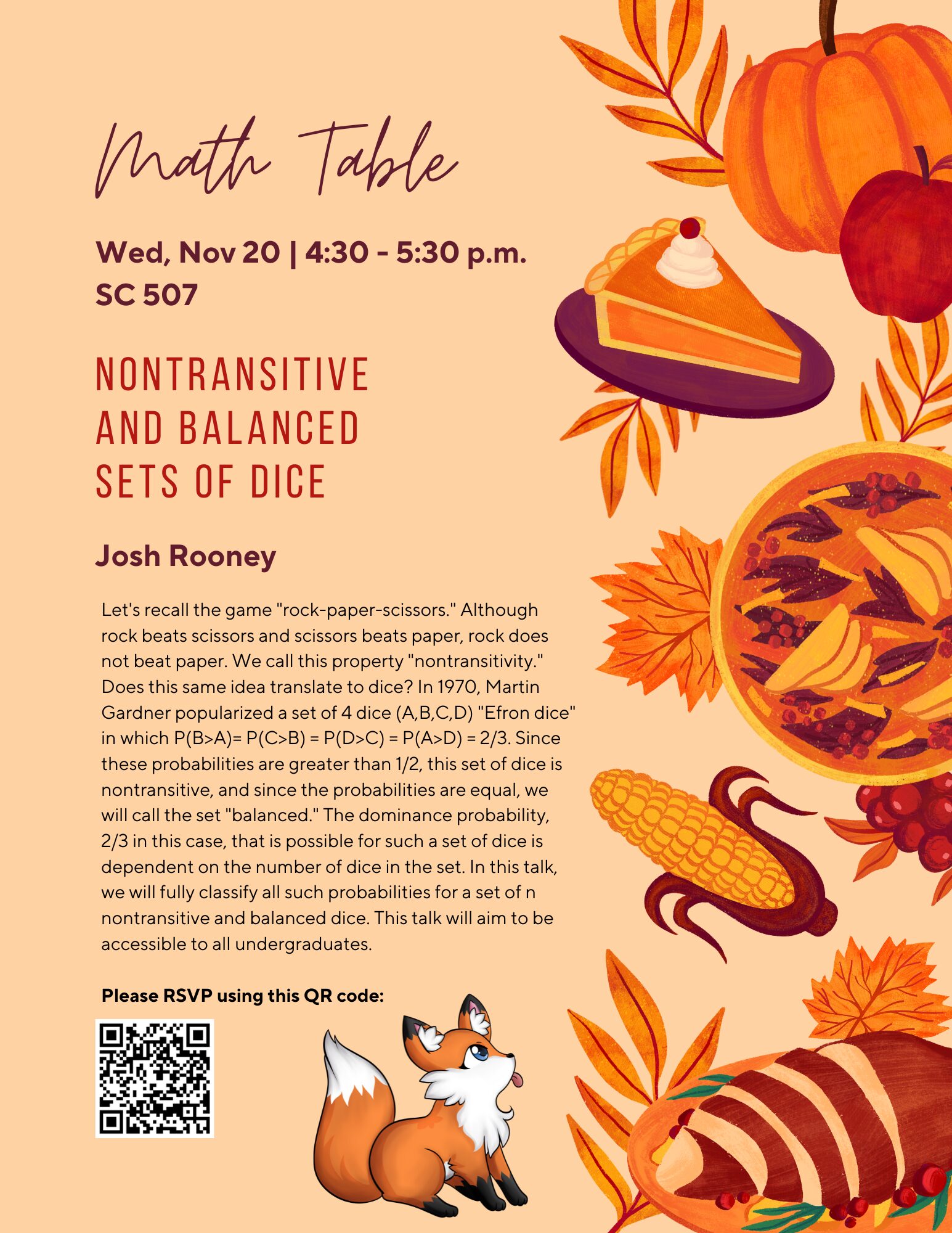
Nontransitive and Balanced Sets of Dice
MATH TABLE
Let’s recall the game “rock-paper-scissors.” Although rock beats scissors and scissors beats paper, rock does not beat paper. We call this property “nontransitivity.” Does this same idea translate to dice? In 1970, Martin Gardner popularized a set of 4 dice (A,B,C,D) “Efron dice” in which P(B>A)= P(C>B) = P(D>C) = P(A>D) = 2/3. Since these probabilities are greater than 1/2, this set of dice is nontransitive, and since the probabilities are equal, we will call the set “balanced.” The dominance probability, 2/3 in this case, that is possible for such a set of dice is dependent on the number of dice in the set. In this talk, we will fully classify all such probabilities for a set of n nontransitive and balanced dice. This talk will aim to be accessible to all undergraduates.
